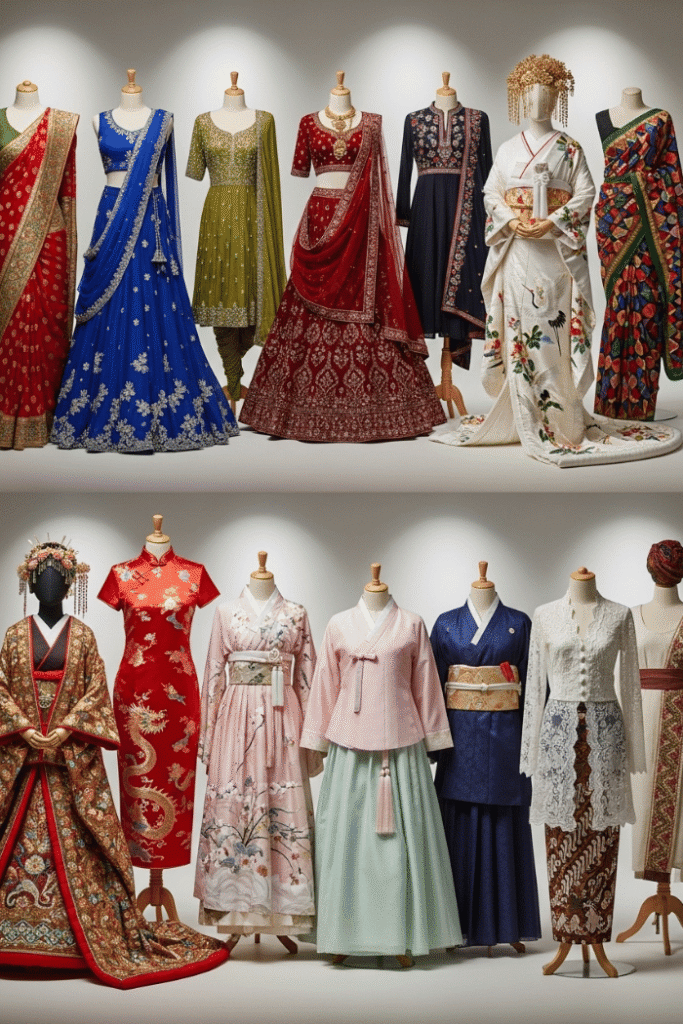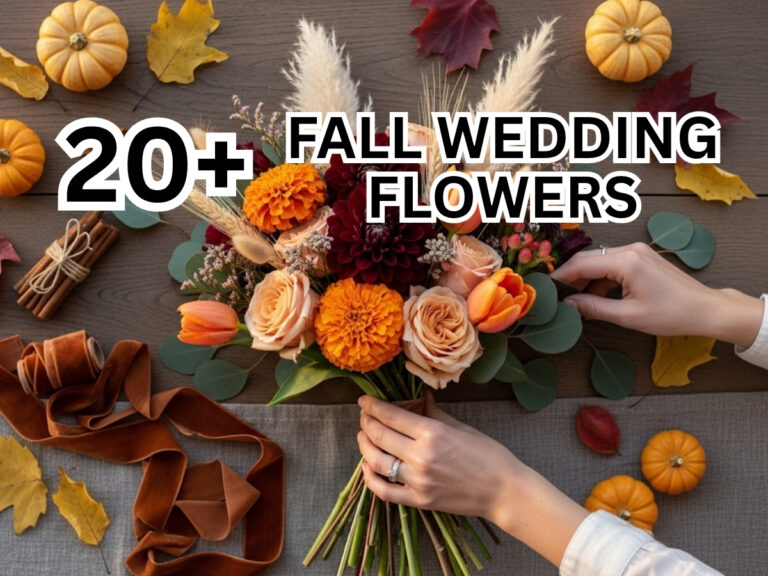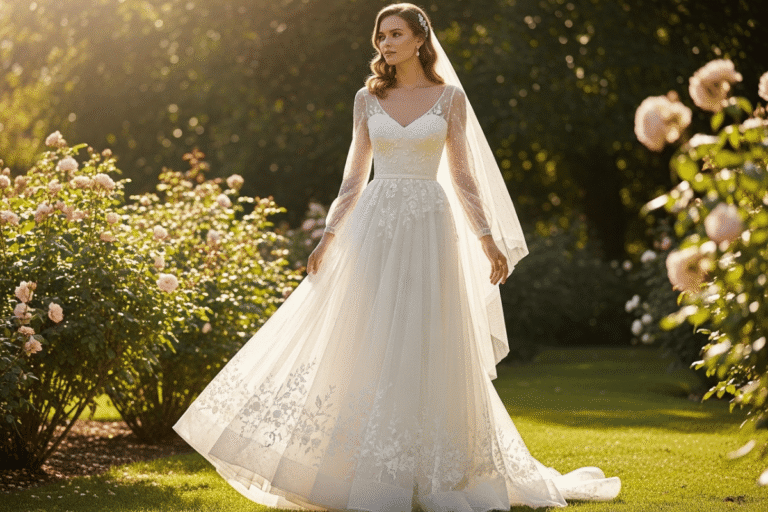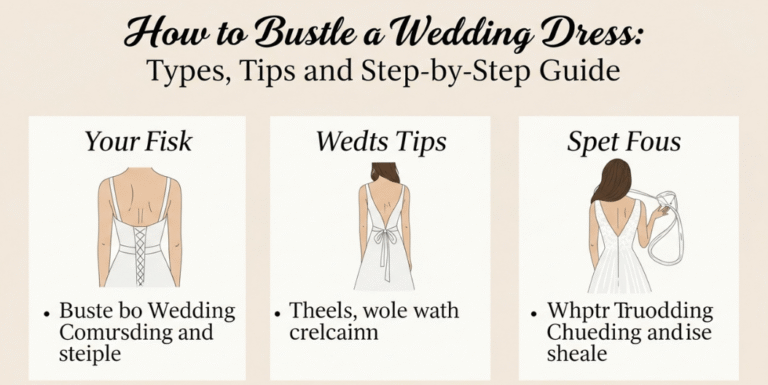Cultural and Traditional Wedding Dresses: A Complete Guide
Wedding dresses worldwide are rich in heritage, symbolism, and cultural significance. Each region reflects its unique traditions, beliefs, and artistry in bridal attire, offering brides a meaningful way to honor their roots while celebrating love. This comprehensive guide explores traditional wedding dresses from Asia, the Middle East and North Africa, Europe, Africa, and the Americas, along with key fabrics, silhouettes, symbolism, and styling tips.

Table of Contents
Asian Traditional Wedding Dresses
Asian bridal wear includes diverse styles such as the Indian saree and lehenga, Japanese kimono, Chinese qipao, and Korean hanbok. These garments feature vibrant colors, fine silk, detailed embroidery, and culturally significant motifs, reflecting centuries of tradition and symbolism.

Indian Sarees and Lehengas
Indian bridal attire is renowned for its vibrant colors, intricate embroidery, and luxurious fabrics such as silk and brocade. Popular choices include sarees and lehengas, detailed with sequins, beads, and sometimes gold thread. Red is the auspicious color symbolizing luck and prosperity. Brides often accessorize with traditional jewelry and henna designs, making their look deeply cultural and regal.

Japanese Kimonos
Japanese brides traditionally wear the uchikake kimono, made from silk and richly embroidered with symbolic motifs such as cranes or cherry blossoms. The kimono uses soft colors like white and cream, signifying purity and grace. This attire is layered and structured, emphasizing modesty and refined elegance, perfect for ceremonial precision.

Chinese Qipaos
The qipao or cheongsam is a body-hugging dress with a high collar and is often adorned with red and gold embroidery symbolizing luck and happiness. Silk and satin fabrics emphasize a delicate sheen, and the dress balances traditional modesty with modern style, often accessorized with red ornaments.

Korean Hanboks
Hanboks consist of a short jacket and a full skirt, usually in bright colors representing joy and celebration. Embroidery and symbolic patterns are common, and modern brides blend traditional hanbok designs with contemporary tailoring for a fresh cultural look.

Middle Eastern & North African Wedding Dresses
Traditional bridal wear in this region varies widely but often features elaborate embroidery, metallic threads, and flowing fabrics like silk and chiffon. Colors range from rich reds and golds to white, depending on cultural nuances.

North African (Morocco, Algeria)
Brides wear richly embroidered kaftans and takchitas with silver or gold thread, paired with intricate jewelry and sometimes a traditional veil or headpiece. These dresses symbolize wealth and protection.

Middle Eastern (Lebanon, Syria)
Traditional gowns here emphasize luxurious fabrics such as velvet and satin, often with lace overlays and detailed beadwork. Modesty is balanced with glamour, with long flowing gowns and high necklines frequently seen.

European Traditional Wedding Dresses
European wedding attire ranges from the classic white gown popularized by Queen Victoria to diverse regional costumes.

Western Europe
The iconic white wedding dress symbolizes purity and has become a global standard. Fabrics like satin, lace, and tulle dominate, with styles ranging from ball gowns to sleek sheaths depending on local fashion.

Eastern Europe
Eastern European brides often wear embroidered dresses rich in folklore motifs and colors, reflecting regional heritage. Headpieces such as floral crowns or embroidered scarves are common.

The UK & Ireland
Traditional bridal style here often includes lace details, long trains, and structured silhouettes. Classic and timeless styles dominate, but modern brides mix tradition with contemporary fashion.

African Traditional Wedding Dresses
African bridal attire is vibrant and symbolic, characterized by richly patterned fabrics such as kente and aso oke. Dresses often include elaborate embroidery, beadwork, and bold accessories that honor tribal heritage and celebrate cultural identity in joyful ceremonies.

Nigerian Bridal Styles
Three major ethnic groups influence styles: Yoruba uses handwoven Aso Oke fabric often paired with a Gele headwrap; Igbo features Isiagu cloth and coral bead crowns; Hausa embraces richly embroidered Shadda gowns with regal headpieces like Khalifa.

Ghanaian Kente Cloth
Kente cloth, handwoven with bright patterns, symbolizes blessings and royalty. Brides wear wraps or gowns made from Kente, combining tradition with modern design.

Ethiopian and Eritrean Styles
Brides commonly wear white cotton dresses with ornate embroidery, often accompanied by a crown or veil. Symbolism focuses on purity and community.

Americas Traditional Wedding Dresses
American wedding dresses are known for their timeless elegance and sophistication, often featuring luxurious fabrics like lace and satin in white or ivory. Styles range from classic full-skirted gowns to modern designs, symbolizing purity and new beginnings while reflecting a blend of cultural influences.

Indigenous Attire
Native American brides may wear garments decorated with beads, feathers, and natural dyes, each design telling a story of their tribe and heritage.

Mexican Huipils
Mexican brides wear huipils—handwoven cotton tunics with vibrant embroidery symbolizing fertility and luck. These dresses are both cultural and celebratory.

Modern Incorporations
Many brides in the Americas blend traditional elements (e.g., colorful shawls, embroidery) with Western-style white gowns to honor both heritage and modernity.
Symbolism Across Cultures
- Colors: Red often symbolizes luck, prosperity, or fertility (Asia, Africa). White unites Western traditions with purity and new beginnings. Gold and metallics depict wealth and status.
- Fabrics: Silk, cotton, brocade, lace, and handwoven textiles vary per region, often chosen for ceremonial importance and craftsmanship.
- Silhouettes: From fitted kimonos and qipaos to voluminous ball gowns and flowing kaftans, styles honor comfort, modesty, and visual impact based on culture.
- Accessories: Headpieces, crowns, veils, jewelry, and henna designs bring symbolic meaning and personal touch to bridal attire.
Styling Tips
- Incorporate cultural jewelry or accessories for added authenticity.
- Blend traditional fabrics with contemporary cuts to create unique bridal looks.
- Consider the wedding venue and ceremony type; some traditional styles are better suited to certain climates or formalities.
- Respect the symbolism of colors and motifs when adapting traditional designs.
Cultural and traditional wedding dresses offer more than beauty—they embody history, identity, and meaningful symbolism. Brides can celebrate their unique heritage through these diverse styles, making their wedding day an authentic and memorable expression of love and culture.

Sophia Lane is a dedicated bridal fashion writer and wedding style consultant with over a decade of experience in helping brides-to-be discover their dream gowns. With a background in fashion journalism and bridal styling, Sophia specialises in writing detailed, research-driven guides on wedding dress styles, fabrics, accessories, and bridal trends.
Her work blends in-depth fashion knowledge, cultural research, and practical advice, ensuring brides receive content that is both inspiring and actionable. She has studied wedding dress history across cultures, analysed emerging eco-friendly bridal trends, and regularly collaborates with designers to stay updated on the latest collections.
Expertise
-
Wedding dress styles, fabrics, and silhouettes
-
Body-shape based bridal styling (petite, plus size, tall, maternity)
-
Sustainable and eco-friendly bridal fashion
-
Bridal accessories, tailoring, and preservation techniques
-
Global cultural wedding attire traditions








One Comment